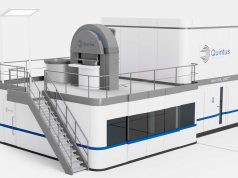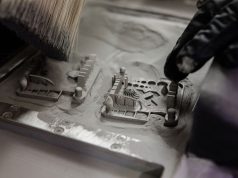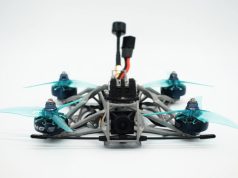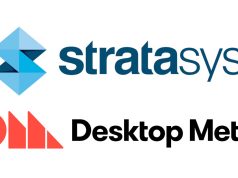When the World Economic Forum reported that the value to society and industry of digital transformation across industries could exceed $100 trillion—yes, trillion—by 2025, we knew that wouldn’t happen without bold innovators who were willing to push boundaries and take risks.
By Paul Benning, HP Senior Fellow & Chief Technologist, 3D Printing & Digital Manufacturing, HP Inc.
Then and now, no industry was more well positioned to realize that potential than manufacturing.
Today, many industries sit at a tipping point. Until recent systems came along delivering 10 times the performance at half the cost, 3D printing technology, also known as additive manufacturing (AM), was too often relegated to prototyping and hobbyist endeavors. Now, 3D printing’s singular ability to have scalable impact across a breadth of urgent demands on businesses, governments and individuals—the need for sustainable solutions, customized products and more strategic supply chains, to name a few—is undeniable.
There is tremendous momentum in this space as more manufacturers embrace 3D printing to deliver products previously thought implausible or impossible. Human tissue, prosthetics and implants that are specific to an individual’s anatomy. Hard-to-find car parts. Shoes customized for individual foot shapes and activity levels. Artificial houses, drones and robots. These and more are the future.
But to make these innovations part of our everyday lives, we need to unlock this market in a few key ways.
From Prototyping to Production
We’re on the cusp of the 4th Industrial Revolution, where physical and digital technologies will radically alter how companies conceive, design, produce, distribute and repair nearly everything. This paradigm shift is expected to completely disrupt the $12 trillion global manufacturing industry by digitizing entire supply chains and production processes, creating 133 million new roles along the way.
To move beyond prototyping and make those incredible use cases commonplace, the 3D printing industry must recognize opportunities to advance—namely, creating powerful, new design tools, investing in specialty materials and closing the major skills gap.
That last need is perhaps the most pressing and what could spur significant progress in the 3D printing market in 2020. There simply aren’t enough skilled workers ready to fill the jobs our industry is creating. And solving that problem requires collaboration. It will take time and a concerted commitment across industry, academia and government. Moreover, it will require a willingness to think outside the box.
A Little Education
Colleges and universities are critical players in the future of 3D printing. Many are heavily investing in 3D printers, and in my experience spending time on campuses around the world, even professors who have been in this field for decades still have a deep enthusiasm for innovation. They’re eager to explore new ways of tackling design and manufacturing challenges, both old and new.
Many traditional colleges today offer meaningful design courses built around 3D printers. However, there is room to expand those offerings in order to better equip next-generation innovators. Not nearly enough programs provide comprehensive curriculums that familiarize students with the numerous disciplines suggested by this technology, including supply chain, industrial engineering, design, material science and manufacturing.
According to a recent Deloitte Insights survey, industry interviewees say they desire a workforce capable of crossing those disciplinary boundaries with ease.
“We don’t need a typical CAD/AM design person,” one industry insider told Deloitte. “We need someone who can integrate the physics, software, materials and creative thinking around AM into a new product.”
To prepare students for tomorrow’s careers—many of which will utilize 3D technology—colleges must start adapting programs beyond machinery investments and encourage the next wave of innovation.
New Materials and Design Processes
For 3D printing to really move from prototyping to production, it’s also going to require the industry to expand its palette of 3D materials and to reduce how much they cost manufacturers. Vendors cannot do this alone. They need an open ecosystem of industry leaders, entrepreneurs, students and academics all working together to envision and deliver the next generation of low cost and high-performance polymer powders in a supply chain that is highly reliable and efficient. Metal and ceramic powder materials have existing supply sources built for analog manufacturing that can be adapted for 3D printing and expanded to new materials and alloys including stainless steel, gold, silver, titanium, and other additive manufacturing powders. Some approaches to 3D printing also make it feasible to create new digital-materials by changing the base material on a voxel-by-voxel basis. This is truly the dawn of a new era in materials science.
There’s a significant opportunity for entrepreneurial businesses to climb aboard and profit in this area. The 3D printing materials market is expected to swell to nearly $6 billion by 2026, according to a recent Reports and Data study. And some companies are making it easier for budding supplies innovators to get involved. HP, for example, has an open platform materials and application lab in Corvallis, Oregon where materials partners have been actively developing, testing, certifying and delivering new materials.
Opportunity also exists to help pave the wave for cutting-edge 3D printing design processes. Earlier this year, HP opened the doors to a new 3D Printing and Digital Manufacturing Center of Excellence in Barcelona, Spain. The 150,000-square-foot facility (about the size of three football fields) is expected to unite hundreds of 3D printing and digital manufacturing experts who will focus on optimizing and integrating additive manufacturing production processes.
And in January 2020, HP will open a new lab on campus at Nanyang Technological University with over 50 researchers as part of a joint HP-NTU Digital Manufacturing Corporate Lab. The $84 million lab will support Singapore’s push toward industry transformation in the areas of digital manufacturing and 3D printing technologies, and will include projects focused on areas such as new materials and machine learning.
Entering the New Year, it is evident the momentum and means are there for 3D printing to move on to the next level and finally make that transition from a niche prototype lay to a serious production tool. But making that happen will take more than talk. Leaders in business, academia and the scientific world will have to recognize its promise, start thinking differently, be willing to take some risks and pursue opportunities as they arise. If that happens, we’ll see 3D printing finally achieving its long-held promise.
Subscribe to our Newsletter
3DPResso is a weekly newsletter that links to the most exciting global stories from the 3D printing and additive manufacturing industry.



























